19 Apr 2008
0 Comments“The Third Place”: A Better Place?
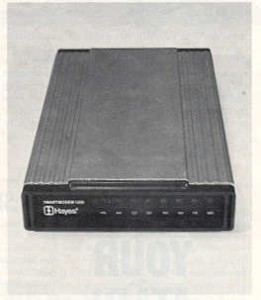 Remember 1200 baud Modems
Remember 1200 baud Modems Latte from A Matter of Taste Cafe
Latte from A Matter of Taste Cafe
The Office Goes Home
Over a short span of years, I’ve witnessed work migrate from a highly structured office setting, to home offices via telecommuting and now into the “Third Place”, a term coined by Ray Oldenberg in his 1989 book The Great Good Place.
Back in the early 1980’s, I was a pioneer of telecommuting, between Waterloo and Chicago via a state of the art 1200 baud modem, pictured above, no less. There was intense interest in this at the time, because as an extremely early adopter (too early some might say) of the telecommuting paradigm, I felt a bit like a guinea pig. In retrospect this workstyle enabled extreme concentration and productivity. At the same time, the primitiveness of the communications technologies, from network speed to the software then available, necessitated a lot of travel for in-person meetings. And, tellingly, the home office can ultimately be a lonely workplace, leading to a decrease in social interaction and overall motivation.
In that early revolution over the last 25 years, telecommuting saw work slowly migrate, or more typically intermingle, between the second place (the office) and the first place (your home). Telecommuting has changed traffic patterns, social life and, on the whole, provided an improved work experience by increasing knowledge worker flexibility.
Enter the “Third Place”
As an early adopter, not to mention beta tester, of many cutting edge mobile technologies and as a long time road warrior working on a number of geographically dispersed projects, I’ve often explored a work style that the Economist has labelled “mobile nomadism”, in their richly insightful 12 April 2008 special section on “The New Nomadism”. Always a great read, the particular Economist feature stands out, especially for those interested in mobility for social, technological, political, artistic or economics reasons. Last week, Alec Saunders ran a great SquawkBox conference call on iotum, with the podcast available on his blog here.
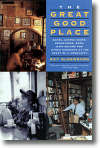
In The Great Good Place, Ray Oldenburg characterizes the Third Place as:
“the place which is neither home nor work, where you spend comfortable time in easy association with friends and a few strangers.”
He celebrates the magic of the English Coffeehouse tradition and the seductive and widespread Viennese Cafe Culture as social gathering places that have often been scenes of political intrigue and even major business enterprise. Likely few are aware that in 1698, Jonathan’s Coffee-house in London started trading stocks and commodities, and eventually evolved into today’s London Stock Exchange. Ironically, Oldenburg was lamenting the decline of such third places.
Today’s revolution of being always connected, spawned by wiresless technologies, has dramatically reversed that decline. Version one of “on-demand” spaces is, of course, the humble WiFi enabled cafe. Locally in the Waterloo area, many establishments, beyond the ubiquitous Starbucks, have innovated in this genre, including:
- A Matter of Taste which is an amazing fusion of art, coffee and WiFi hotspot,
- Exhibit Cafe another melange of art and local, organic food right in the Children’s Museum,
- Williams Coffee Pubs, a local chain with food and long hours, popular with students doing late night assignments, hackers and even those working on offering memoranda, and
- C’est Bon Cafe, with its international flair and sinfully good Chocolate Fiesta Fire, and Refuge for village cocooning are great examples in bucolic Elora.
Initially, these cafes served as venues for meetings that were more informal, more conducive to creativity, and powered by wonderful Latte macchiato creations (pictured above). Eventually, I started to do small amounts of work there to increase productivity in the dead time between offsite meetings, including planning and brainstorming, reading briefing documents and eventually emails and, truth be told, writing this blog post. The environment is pleasant, a vibrant mix of people from a wide array of social backgrounds. It is worth noting that I always have the choice how much I wish to tune in or tune out those around me, just as I choose to go there to relax, work or both.
All new technology breakthroughs require adjustment. In this case, the major downside of nomadism is that the mix of real and virtual channels can lead to socially awkward situations. One is the issue of alienation, where people are more attuned to those they are in their virtual universe than those in the real world around them. While I may return to this topic at a later time, I would expect that society will eventually evolve a hybrid, multi-tasking communications style, learning to strike a reasonable balance between isolation and the global reach afforded by such virtual, always-on communications.
Instead I will focus on the opportunities. Beyond the obvious environmental benefits of reduced commuting, I strongly believe that the next generation of third places could serve to enrich our life as we build communities of the future. In Waterloo Region, there are signs that many are thinking about this challenge and building better third places that encompass peoples’ needs from business to the arts to entertainment and fun. In short, the building of vibrant, social spaces will create healthy cities of the future.
One aspect that is immediately apparent in the best of these first generation, third places listed above is the role of the arts in their mix. The simple coffee house is just the beginning. The impact of the arts is much more than art on the walls — it is a certain style and ambience you feel when you enter. Arts is an enormously creative endeavour, and I firmly believe, has a great affinity for the natural creativity inherent in the most innovative, knowledge-based companies of the 21st century. People like Alf Bogusky, Director General of KW Art Gallery have been developing a vision to reshape our urban spaces on a collaborative model based around the notion of third place. Historically, the arts institutions like art galleries, public libraries, theatres and concerts halls have been enclaves, walled off from the rest of the city. Alf and a group of leading thinkers have been mapping out a very different future, which exploits the natural synergies between all these stakeholders. Stay tuned …
In summary, we’ve witnessed a huge transaction through several generations of societal change from fixed offices to telecommuting and now rampant nomadism which is creating new spaces called the third place. I challenge all those who are beta testing the new mobile nomadism and who interact in these new third places, to please comment and share your experiences – we truly are building the city of the future in the context of the global village.


 Electronic Bill Presentment and Payment: In the late 1990’s, Electronic Bill Presentment and Payment (EBPP), in which consumer bills that had been printed and mailed via the postal service, are instead processed automatically as a web service, was an exciting emerging market. I can remember the palpable frustration of
Electronic Bill Presentment and Payment: In the late 1990’s, Electronic Bill Presentment and Payment (EBPP), in which consumer bills that had been printed and mailed via the postal service, are instead processed automatically as a web service, was an exciting emerging market. I can remember the palpable frustration of 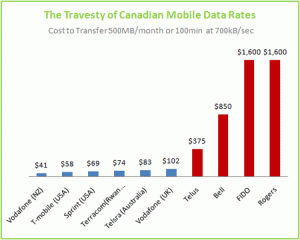 The roots of this problem have been discussed many times, including in this blog and by
The roots of this problem have been discussed many times, including in this blog and by 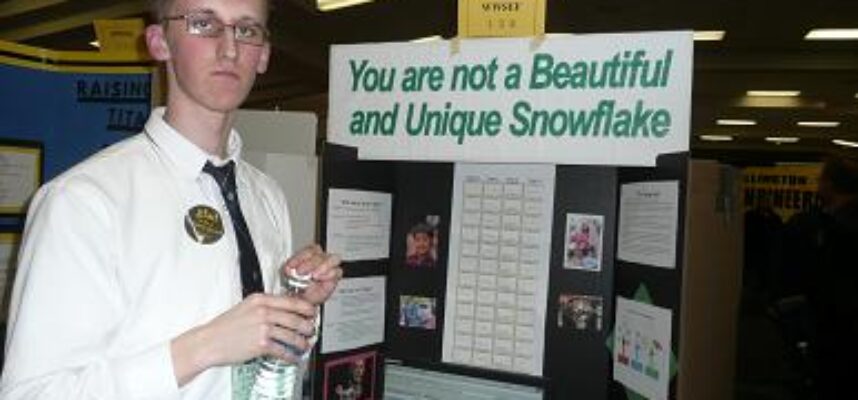
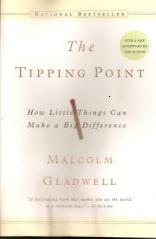 From that springboard, he became interested in the way fads and other changes propagate through society, especially illustrated by recent books like Malcolm Gladwell’s
From that springboard, he became interested in the way fads and other changes propagate through society, especially illustrated by recent books like Malcolm Gladwell’s 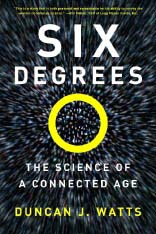 Now, let’s drill a bit deeper to understand why this is so important. Malcolm Gladwell is a (very persuasive) popularizer of complicated and transformational ideas. By contrast, Duncan Watts, associate professor of Sociology at Columbia University and author of the 2003 book
Now, let’s drill a bit deeper to understand why this is so important. Malcolm Gladwell is a (very persuasive) popularizer of complicated and transformational ideas. By contrast, Duncan Watts, associate professor of Sociology at Columbia University and author of the 2003 book 
 The world is indeed a strangely fascinating place. Technological forces have recently flattened the world, making the global village predicted by
The world is indeed a strangely fascinating place. Technological forces have recently flattened the world, making the global village predicted by  Likewise, the 1999 Vietnamese/American film
Likewise, the 1999 Vietnamese/American film 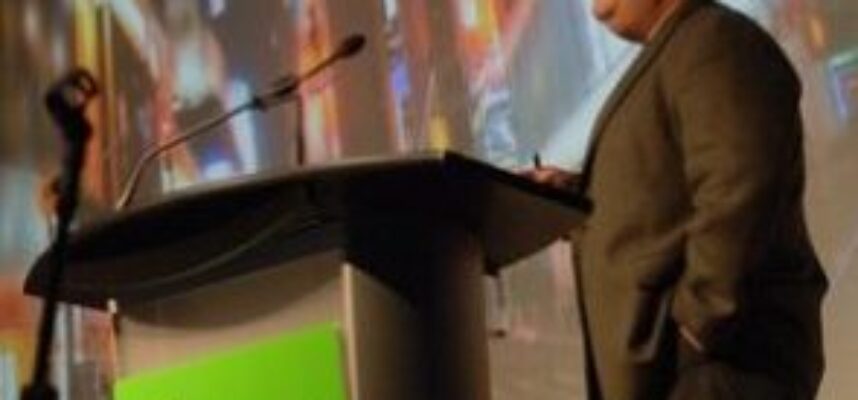
 It seems that several people missed the “Comments” link where Grover posted his materials for the Venture 2.0 Playbook. Therefore, I’m reposting his comments with the link here below. Also, although we’ve had some great dialogue offline about this extremely important topic, I’d like to see some here.
It seems that several people missed the “Comments” link where Grover posted his materials for the Venture 2.0 Playbook. Therefore, I’m reposting his comments with the link here below. Also, although we’ve had some great dialogue offline about this extremely important topic, I’d like to see some here.
28 Apr 2008
0 CommentsIs There More to Early Adopters than the Next Big Thing?
In saying:
it’s not entirely clear that Groucho Marx was referring the much-vaunted early adopter of a previous post. Therein, I illuminated how important early adopters are and the hazards of miscuing when serving them in newly minted markets. Because of this, I thought I’d share a few personal experiences of what motivates me to adopt early. Of course, I’m a technophile, yet I’m hardly indiscriminate in my acquisition of new technologies.
How do I decide where to focus my energies? Let’s start by looking at a few of the new technologies I didn’t adopt and why not, and discern some lessons from that.
Compact Disc
As an audiophile in the 1970’s, I spent lots of time researching and purchasing hi-fi audio systems with a primarily primarily British lineage, including: high end turntable (Linn Sondek or Rega), cartridge (Supex), pre-pre-amp, pre-amp (Meridian, Naim or Tangent), amplifier, speakers (Harbeth), etc. I read the quirky “Hi Fi Answers”, patronized audiophile shrines like Ring Audio and CC Audio and even had equipment (from Tangent) for which total production volume was about 100.
The 1982 introduction of the Compact Disc (CD) was a major market disruption. Unfortunately, although the CD overcame the clicks and pops inherent in the analogue vinyl LP , the format had a disappointingly low sample rate limited by the state of technology at the time. As a good friend and audiophile engineer, who worked on the Synclavier synthesizer, said: “you can’t simulate a sine wave with a square wave”. Well, doubly so at too low a sample rate. Forced to create a standard that was at best a compromise, high end audio has suffered ever since. And, we won’t even mention that audiophile travesty known as MP3‘s.
I can remember being at the Spring CES in 1984 and hearing a CD demoed against a Linn Sondekand Meridian bi-amped system. After the blindfolds were removed, it was clear that i had been the LP which produced bright and vibrant sounds, while the CD sounded comparatively lifeless. As a result, I probably delayed my conversion from LPs to CDs for about 5 years, if only because the CD was good enough for the average audio listener. It’s interesting that the lowly vinyl LP continues in the turntable art and mashup set today, while I continue to remain unexcited by the sound quality of the CD, a standard launched more than 26 years ago. Of course, 99% of the market, apart from the long tail like me, think the CD was a vast improvement over the compact cassette and a low end turntable.
Personal Digital Asistant
Way back in 1996 when some of my early adopter buddies hoisted their trendy stylus to enter text in a new language called Graffiti, the Palm Pilot was all the rage. Nonetheless I stuck stubbornly to my paper and leather Economist personal diary. My paper-based calendar and address book was simply good enough for me on a pragmatic level and it was also portable, fitting nicely into my jacket pocket.
What I seemed to know intuitively, way back then, was that the technology disuprtion that would change my thinking was the addition of the (mobile) internet connectivity into the mix. So, for me, the late 1999 birth of the original Blackberry 950 was a quite different story than the first PDAs. Essentially a two-way pager, which primitively fused email connectivity with the calendar and address book of the PDA, the early Blackberry was much less sleek than the device I now carry (pictured on the right).
By solving a new problem, doing email and keeping almost all my information at my fingertips, it became an indispensable arrow in the quiver of a nascent mobile nomad.
The Next Wave
Building on the lessons of the Blackberry, for me, the next wave of applications will clearly be in the web-enabled, mobile applications category. As an inadvertent mobile nomad, the value in being an early adopter may well be more apparent to me, and allow me to put up with more glitches than the next person. Of course, at least in North America, the entire mobile data infrastructure is still one big “beta test” when scrutinized for coverage, reliability and cost factors.
The big gap I see for the coming few years will be to both transition existing applications off my desktop and/or notebook computer and also to build new applications that benefit from the fusion of internet and mobile standards with things like GPS, Bluetooth, camera, secure payments, etc. Ironically, as we see convergence of more and more features in a single mobile device, we will also witness a new specialization as well. For example, a high-end GPS navigation device or a Mobile Internet Device (MID) may well have roles that the basic smartphone will never fulfill.
Recently, I’ve been testing a very simple MID computer called the Asus EeePC. With 7″ screen, full (but small keyboard), 8 GB solid state flash disc, 2 GB RAM and the ability to add 32GB of SDHC or USB disc, and running Ubuntu it does almost everything a legacy Windows notebook does. However, this is small, light, solid state so it can be used in more places and more flexibly. Not without some rough edges, the device shows promise and at least will help me evaluate a more mobile web-enabled application set of the future.
Lessons
Here are some lessons I’ve learned that have applicability both to those who like to live on the “bleeding edge” and to companies trying to serve the early adopter market:
Being a technology pioneer is both fun and time confusing. With appropriate focus, it does have its rewards. Please feel free to share your early adopter war stories and, to comment on the trends identified here.